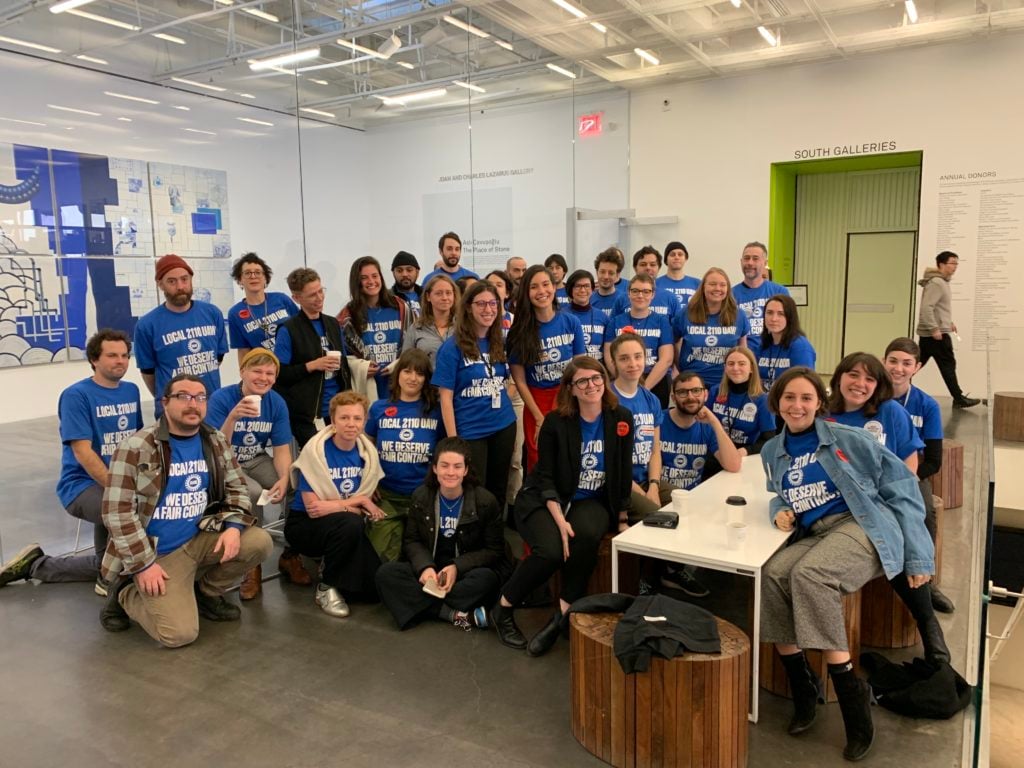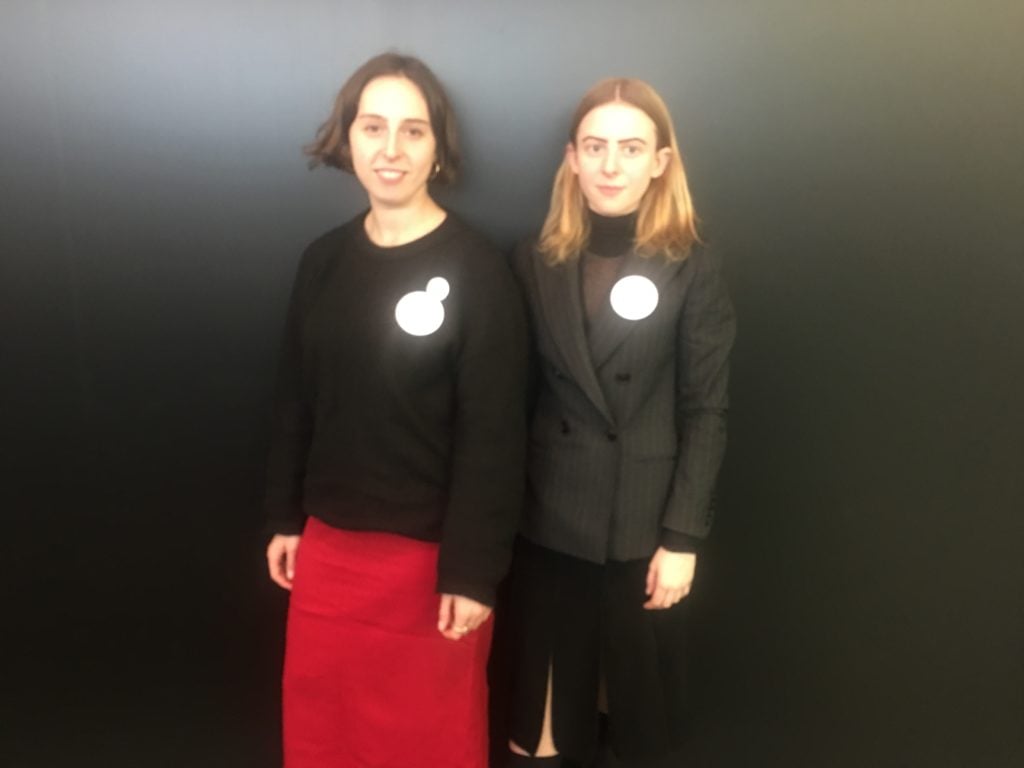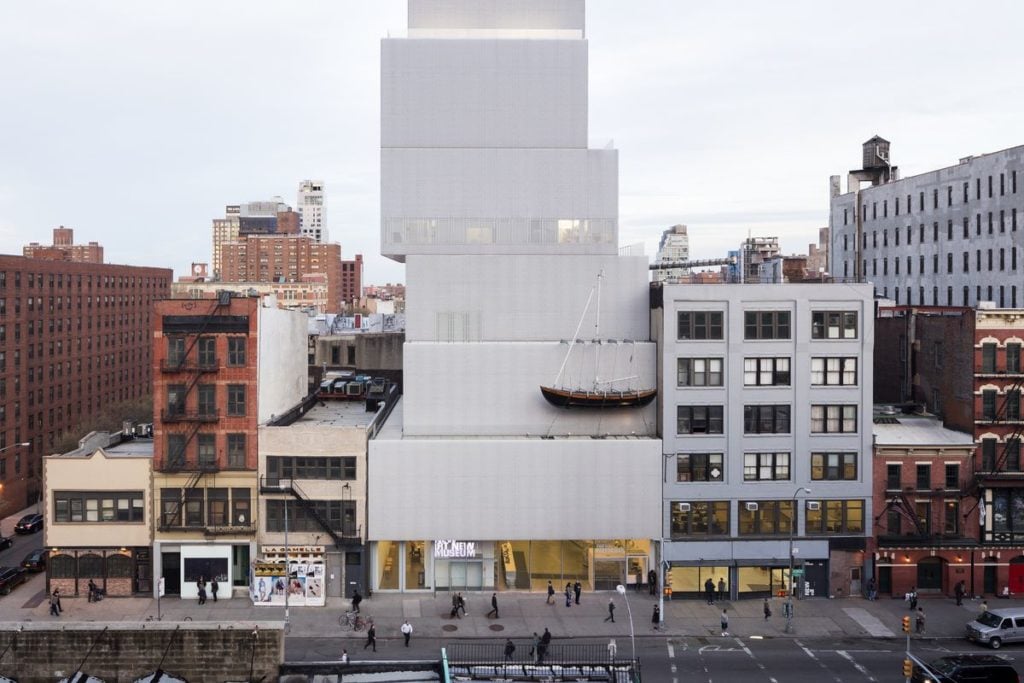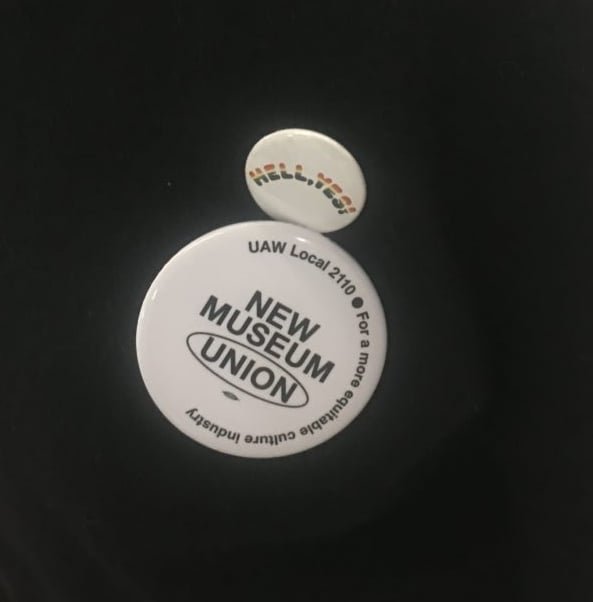Politics
In a Landslide Decision, Employees at the New Museum Vote to Unionize
The staffers hope the union will help to address grievances such as low pay and long hours.

The staffers hope the union will help to address grievances such as low pay and long hours.

Rachel Corbett &
Julia Halperin

Staff of the New Museum put on a show of unified strength this afternoon, voting to join Local 2110 of the United Auto Workers, which also represents members of other museums, including the Museum of Modern Art and the Bronx Museum in New York.
“We’re so beyond excited about this overwhelmingly positive result—what it means not only for us as workers, but for the future of the museum and the art world as a whole,” says Dana Kopel, a senior editor and publications coordinator at the museum who spearheaded the unionization effort.
“The eligible employees considered the pros and cons of unionization and decided in favor of a union,” the museum said in a statement. “We respect their decision, and will move forward in good faith.”

Dana Kopel (L) and Lily Bartle, employees in the New Museum’s publications department. Photo: Rachel Corbett.
Of the approximately 50 employees who were eligible to participate, 38 voted in favor of the measure and eight voted against it. There were also 10 unopened ballots, submitted by those who claimed the right to vote, but whose eligibility was denied by the museum. To be able to vote, staffers had to be non-supervisors, and had to hold positions that were outside of the maintenance and security departments.
Over the course of three hours this afternoon, they filed in and out of the museum’s downstairs theater to submit their ballots. Some were milling around the museum’s cafe sporting their “New Museum Union” buttons. But the jovial mood comes after two weeks of mounting tensions between staff and museum leadership.
The lead-up to the unionization opened up a broader conversation about priorities and working conditions at the museum. This year, the institution expects to break ground on an $85 million expansion designed by star architect Rem Koolhaas.
Meanwhile, current and former museum employees who spoke to artnet News often complained that entry-level salaries are unsustainable—around $35,000 to start—and that some departments discourage workers from accurately reporting their hours in order to avoid paying them overtime. A spokesman for the museum says it offers competitive salaries for its location and size. The spokesman also said the median salary for full-time employees who were eligible for the union vote is $52,000.
According to three current and former staffers, turnover rates are high and the museum can take months to refill positions, leaving the remaining staffers to do multiple jobs on top of their own.
“The low salaries breed turnover, so it’s just this constant flow of people that makes everyone burned out,” said one former museum employee who asked to remain anonymous. “I took the job because I would’ve chopped my arm off to work there at the time, but it just wasn’t sustainable. I didn’t have a safety net, no support from my parents. A lot of people get to the point where they’re like, ‘I’m working a job meant for rich people.'”

The New Museum. Photo: Dean Kaufman courtesy of the New Museum.
Kopel, the senior editor who led the unionization charge, has been at the institution for a little over two years and is the longest-serving employee in her department, she says. She’s had three bosses since she started.
Another concern is that there is virtually no consistent, designated venue to air professional problems. The museum’s CFO, who had been largely in charge of human resources, recently left the position, and it remains unfilled. “But even before then, I think the general sense is there’s not much of an HR structure or grievance system in place,” Kopel says. A spokesman for the museum says it has been working with a search firm to recruit a dedicated human resources director since early December.
Many of these issues are emblematic of problems that staff at other institutions are grappling with: low pay, long hours, and the absence of a clear reporting structure. But some employees say the environment at the New Museum is uniquely challenging compared to other places they’ve worked. What’s more, the museum—founded by Marcia Tucker in 1977 after she was fired from the Whitney Museum—has a reputation for forward-thinking exhibitions and programs.
“It’s hard when you get hired by an institution with such progressive rhetoric and you don’t have a voice,” said one former employee. “The New Museum sets the standard for a lot of institutions, and they are setting a lower standard.”
Union organizers originally expected to have around 74 potential voters. But they say the museum, which provided the list of eligible workers, categorized many more employees as supervisors than they expected.
“Removing people from the bargaining unit is a tactic to weaken a union by making it smaller, and also easier for management to promote people out of it faster,” Kopel says. She was among those who was surprised to be designated as a supervisor. Kopel and others who do not agree with their classification could not vote today, but can now contest their status to the Labor Board if they wish to join the union.
A spokesman for the museum says it has not reclassified any employees or changed job titles and is following the Labor Board’s criteria for determining eligibility.
“Tensions must be high,” said one former employee of New Inc, a non-profit cultural incubator launched by the New Museum in 2013, who asked to remain anonymous. “The office is so small. It’s cramped, tiny. They’re all more or less in each other’s breathing room.”

Photo: Rachel Corbett.
Earlier this month, the museum drew heat for hiring the firm Adams Nash Haskell & Sheridan, which specializes in countering union campaigns. (A spokesman says the firm was one of several it engaged temporarily to educate itself on the unionization process and that the museum is no longer working with them.) Later, some 50 artists, including Martha Rosler, Liam Gillick, Andrea Fraser, and Paul Chan, signed an open letter criticizing the museum’s anti-union efforts.
“We are troubled by New Museum leadership’s decision to hire an anti-union firm to sow fear and hostility and to misinform both management and staff about the role of unions in the workplace,” the letter read. “Intimidation and misinformation do not constitute open engagement with the Museum employees. Moreover, such behavior goes against everything that the Museum has historically stood for—that is, equity, diversity, and a commitment to institutional responsibility.”
In a statement provided to artnet News ahead of the vote, a spokesman for the museum stated: “The New Museum is a relatively small institution with a strong mission—we have always worked closely and collaboratively. We don’t believe unionization is the best way to preserve what is special about our culture or advance change. We value the creativity and input of the entire staff, and we will do everything we can to maintain our distinctiveness.”